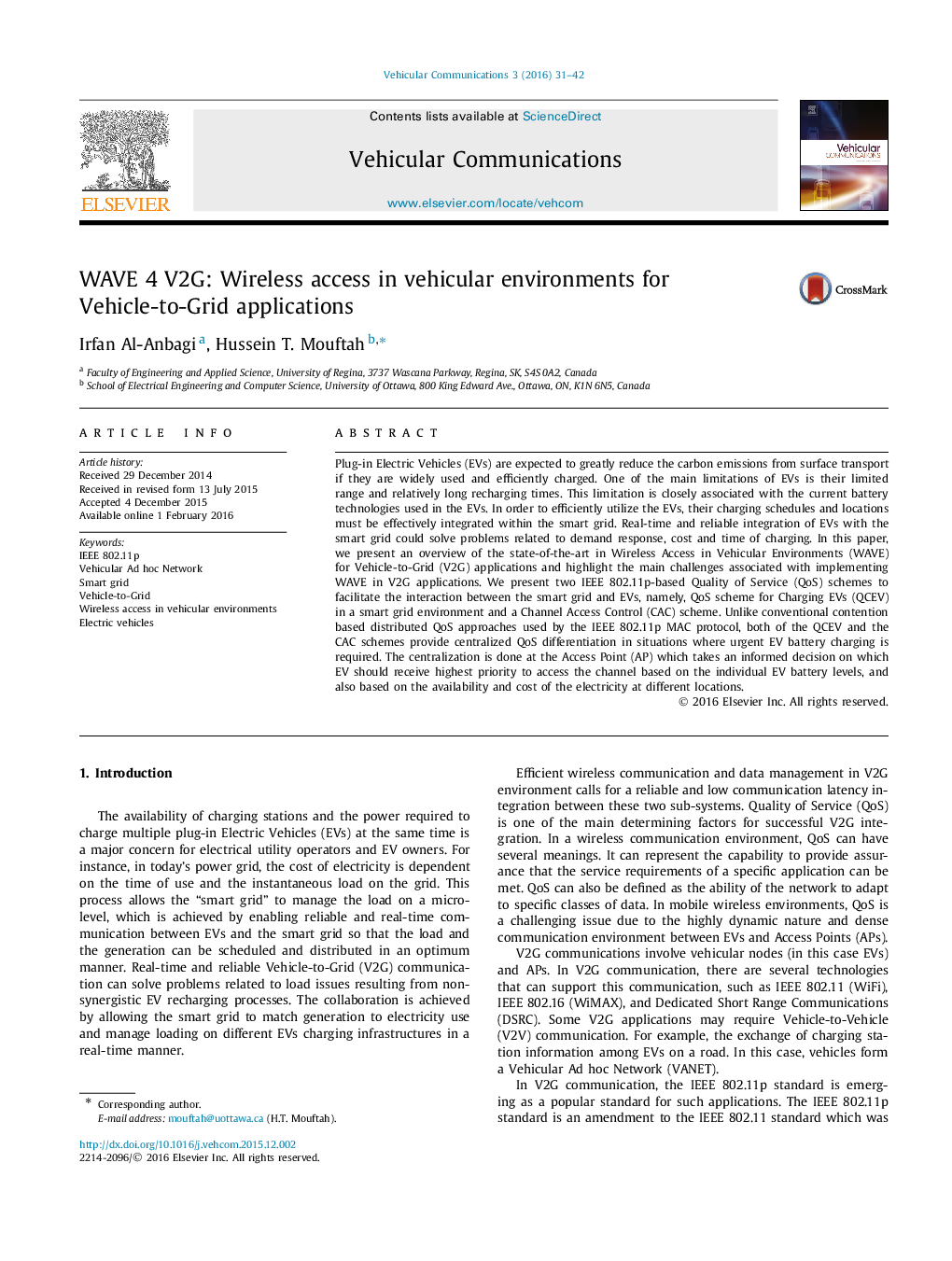| Article ID | Journal | Published Year | Pages | File Type |
|---|---|---|---|---|
| 465706 | Vehicular Communications | 2016 | 12 Pages |
Plug-in Electric Vehicles (EVs) are expected to greatly reduce the carbon emissions from surface transport if they are widely used and efficiently charged. One of the main limitations of EVs is their limited range and relatively long recharging times. This limitation is closely associated with the current battery technologies used in the EVs. In order to efficiently utilize the EVs, their charging schedules and locations must be effectively integrated within the smart grid. Real-time and reliable integration of EVs with the smart grid could solve problems related to demand response, cost and time of charging. In this paper, we present an overview of the state-of-the-art in Wireless Access in Vehicular Environments (WAVE) for Vehicle-to-Grid (V2G) applications and highlight the main challenges associated with implementing WAVE in V2G applications. We present two IEEE 802.11p-based Quality of Service (QoS) schemes to facilitate the interaction between the smart grid and EVs, namely, QoS scheme for Charging EVs (QCEV) in a smart grid environment and a Channel Access Control (CAC) scheme. Unlike conventional contention based distributed QoS approaches used by the IEEE 802.11p MAC protocol, both of the QCEV and the CAC schemes provide centralized QoS differentiation in situations where urgent EV battery charging is required. The centralization is done at the Access Point (AP) which takes an informed decision on which EV should receive highest priority to access the channel based on the individual EV battery levels, and also based on the availability and cost of the electricity at different locations.
